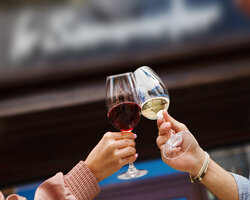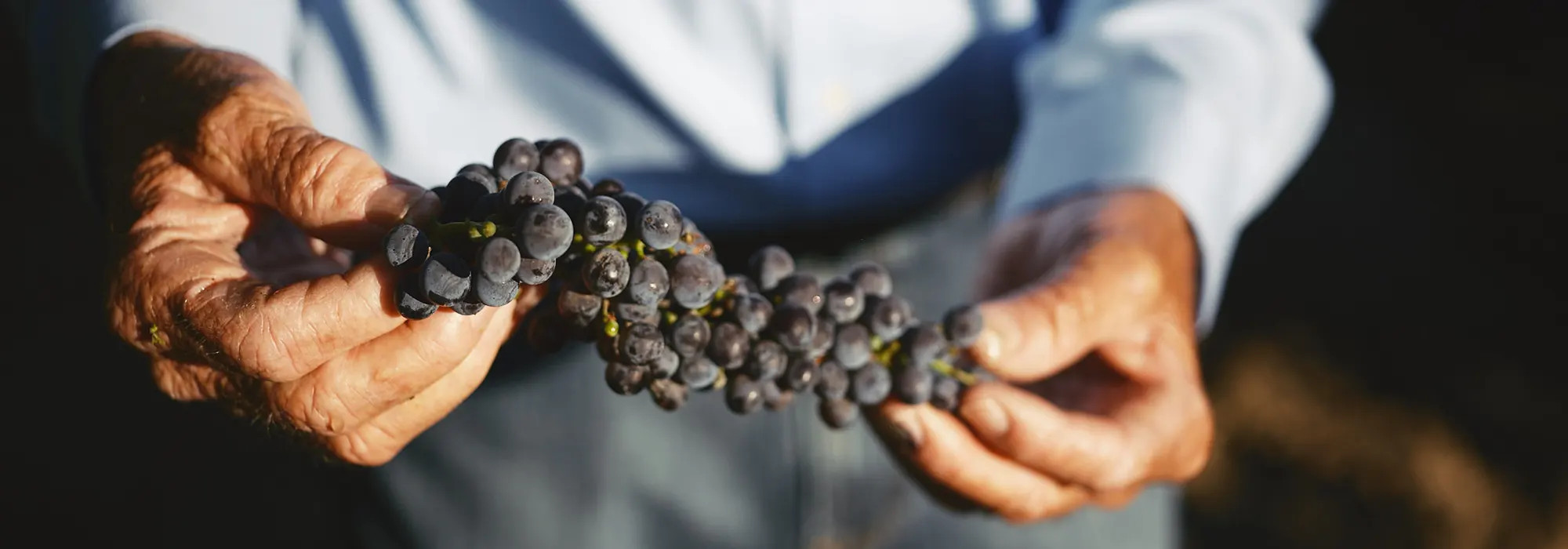Ask The Experts

Temecula Valley Wine Pros Weigh in on Some of Your Common Wine Questions
Every April, the Temecula Valley Winegrowers Association hosts its annual “Grape Day.” The one-day conference is for winemakers, winery, and vineyard owners, and those with an interest in the wine industry to learn about the latest tools and developments in enology and viticulture. While some of the topics may be a bit advanced for the everyday wine lover who may just have a few questions about what’s in their glass, the event always sparks a spirit of curiosity among our winery staff and the visitors to our tasting rooms.
The beautiful thing about wine is that you can never truly know everything there is to know, as not only is the business always changing, but so is what’s in our glass from vintage to vintage, grape to grape. But we do tend to see some of the same questions come up from time to time. Luckily, we have no shortage of experts in Temecula Valley who are eager to help wine lovers understand some of the tricky or confusing aspects of this beguiling beverage. We’ve rounded up a few of the most common queries and asked some of our talented Wine Country personalities to weigh in.
Q. Is all of this rain helping or hurting the vines right now?
A. We get asked all the time if all of this rain is good for the vines. The short answer is YES! The long answer is our soil has a high salt content due to our water supply. These soaking rains really help leach the salts out of the ground. Sometimes, when the water is really flowing, we get exposed roots. This just shows how amazingly deep they grow to find water. Even when this happens the vines are resilient and just need to be re-buried.
– Rick Buffington, winemaker, Cougar Vineyard and Winery
Q. Why can’t I call bubbly from California “Champagne”?
A. Champagne is a specific type of sparkling wine that comes from the Champagne region of France. By law, only sparkling wines made in Champagne using certain methods can be called Champagne. While sparkling wines made in California may be made using similar methods, they cannot be called Champagne because they do not come from that region. Instead, California sparkling wines are labeled as “sparkling wine” or “California sparkling wine” to indicate their origin. Sometimes you will see terms like “Méthode Champenoise,” on the bottle, indicating that the sparkling wine was made using the same technique to produce bubbles as in Champagne – namely with the secondary fermentation (the one that makes the bubbles) taking place in the bottle. While they may not have the name recognition of Champagne, there are many delicious and high-quality sparkling wines made in California that are worth exploring.
– Gus Vizgirda, winemaker, Wilson Creek Winery
Q. I just saw a wine labeled “vegan” – isn’t all wine vegan?
A. We have been asked here at Palumbo Winery if our wines are vegan or vegetarian-friendly, and the answer is yes, but a more in-depth conversation is necessary to find out what the consumer is really concerned with. The process in question comes down to how a wine is fined or clarified. While there are many ways to get the job done, some products commonly used are derived from animals. Gelatin (pigs), isinglass (fish), albumin (egg white), and casein (cow’s milk) are all commonly used products to help fine and clarify wine. The reason it’s important to have a deeper conversation is that while all of these “ingredients” can be used in producing a fine wine, they are filtered out prior to bottling. In fact, several studies have been conducted and there is no evidence that drinking wine that used these agents creates any physical reaction in people. In short, they are used but not present in the final product.
Other methods, including carbon, clays, or the very pronounceable fining agent polyvinylpolypyrrolidone (PVPP) are often used as alternatives to animal byproducts and are considered “vegan friendly.” Another way to get that wonderful clarity in fine wines is to just be patient, as we are here at our winery. Time in barrel and repeated “rackings” help clarify the wine as all the proteins, yeast and other organic particles settle out.
All this brings us to the question, are you concerned with what you are consuming or what the ethical implications are for you as a consumer. As you can see, asking if the wines are Vegan friendly can be an important one to ask, but knowing why it matters to you and knowing the different fining agents used by a given winery is what really lets you know what is, or more correctly is NOT, “in your glass”.
– Nick Palumbo, owner & winemaker, Palumbo Family Vineyards & Winery
Q. I opened a bottle of red wine and only drank part of it. What’s the best way to store the rest?
A. The best way to keep your wine from spoiling is to DRINK IT ALL; but, if you can’t, try keeping oxygen away from the wine. One way of doing this is to move the wine to a smaller container with less headspace (or if you are keeping it in the same bottle store the bottle upright) to minimize the amount of oxygen contact with the wine. Also, you can add argon gas into the headspace replacing the oxygen in the bottle.
– Christina Falik, owner, Gershon Bachus Vintners
Q. Do I really need to drink white wine with fish?
A. Pairing only white wine with fish and only red wine with red meat leaves us with a narrow assumption – that all white wines and all red wines have the same characteristics. It also assumes that all red meat dishes and fish dishes are equal in consistency and preparation. Let’s give our winemakers, centuries of viticultural studies, and culinary advancements more credit than that, friends!
While an oaked Chardonnay and buttery lobster are a match made in heaven, there are other options. The complexity of not only white wine grapes themselves, but the array of winemaking styles and choices, leave us with ample options for pairing wine and food. Focus more on the body and flavor profile of the wine and match it with cooking preferences and the seasoning of the dish to create a more balanced meal.
Let’s highlight some of the lighter-to-medium-bodied red varieties that grow beautifully in Temecula Valley, like Sangiovese, Barbera, and Tempranillo. Just like Sangiovese is amazing with tomato-based pasta dishes, it can also be beautiful with braised octopus in a slow roasted tomato sauce. The fruity notes in a lighter-bodied Barbera would be ideal for paprika-soaked salmon. Try Tempranillo with a Cajun-style shrimp boil.
Don’t shy away from “unusual” pairings. One of our favorites is a fruit-forward, jammy Zinfandel paired with fruit preserves and a nutty spread atop toasted crostini (yes, a PB&J).
- Danaé Wegner, WSET Level 2, Assistant Tasting Room Manager, Peltzer Family Cellars


